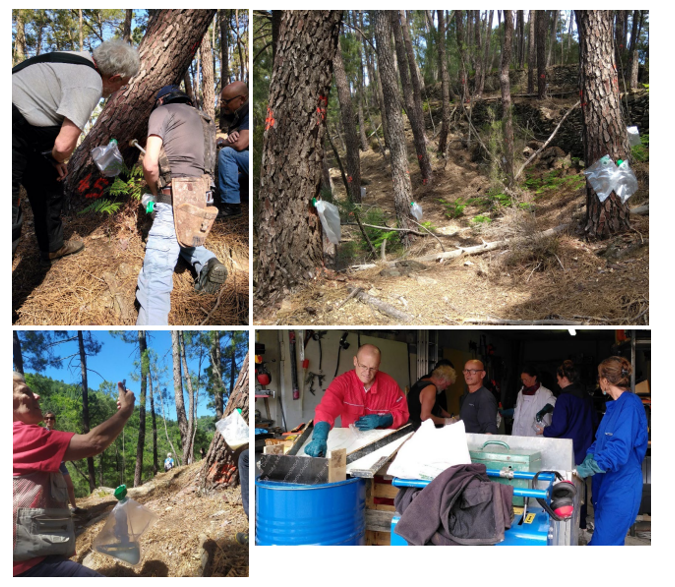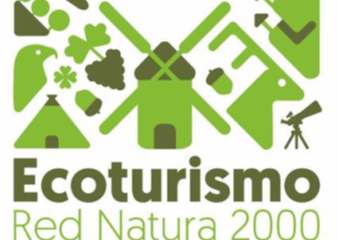Creation of a gemmage sector in Cevennes
France
Introduction
Faced with an underdevelopment of maritime pine established in Cévennes from the 19th century onwards, a collective carried out an experimental study aimed at creating a new sector for the extraction of resin by gemmage. This sector would make it possible to relocate the manufacture of products with multiple uses (green chemistry, thermal care) and in demand in the territory.
Presentation of the project
Although financially supported by the syndicate of Pays Cévennes, this project is the result of a true collective dynamic bringing together forest owners, forest managers, entrepreneurs, researchers, bearers and animators of the forestry charter, all lovers of Cévennes and wishing to work for a living territory. Straddling the Gard, the Lozère and the south Ardèche, the Cévennes are characterized by over 60% forest cover, a large part of which is populated by maritime pines (over 36,000 ha). This pine has spread without proper forest management. Currently converted into wood energy and pulp, or at best into a wood pallet, it is underutilized and many plots are difficult to access. In addition, we use within France products made from pine resin, such as turpentine essential oil and rosin, which are produced abroad (Spain, Portugal, China, Brazil, Indonesia) for industrial, pharmaceutical or cosmetic uses. Locally, the Fumades spa uses essential oil for thermal treatments and is asking to relocate its supplies. There is therefore an opportunity to create a local pine resin extraction and processing industry, known as gem, for use in the territory. Sewing is an activity already present on the Landes massif. Although it is competing with foreign production, it is maintaining itself and, above all, offering an extraction that respects the environment (delaying ecological healing). Cooperation between the Landes and Cévennes territories was therefore established to carry out a technical and economic study on the development of the sector. The objective of the study was to: – Evaluate the areas available for resin harvesting – Evaluate the quantities that can be extracted on the territory – Evaluate the costs of harvesting and distillation – Compare economically different distillation techniques – Target potential actors (harvesters/processors/users) to sustain the sector – Provide a viable economic model A harvesting campaign was organized on two sites of a municipality of the Gardoise (Le Chambon) in 2022. The harvesting days helped train future harvesters, thanks to the know-how of a Dutch company that has developed a fully environmentally friendly shedding technique. The resin collected was analyzed by a research laboratory at INRAE and the University of Montpellier. A study office commissioned to carry out the economic study carried out a mapping of the areas that could be exploited (according to the terrain, the diameter of the trees, access), estimated the production volumes, identified the best distillation techniques (quality of the finished product, level of equipment), targeted and analyzed part of the market sectors, operating costs, gross margin. The economic opportunity of this sector has been validated and the key future players identified.
Emblematic character of the project
The Cévennes LAG supports economic activity linked to its local resources with three priority objectives: creating jobs and know-how in the area, preserving resources and reducing the general environmental impact by relocating production (foreign production, transport). This project for the creation of a pine slag sector perfectly meets the LAG’s strategy with: – the use of a local resource, – the acquisition of new working techniques, – the manufacture of high-value-added products, – environmentally-friendly extraction (delayed eco-certified healing, no overexploitation) – the relocation of the manufacture of products already used in the area The Cévennes LAG prioritizes projects involving a network of stakeholders. The project brought together more than 30 stakeholders: Public authorities and institutions; trade unions, associations, cooperatives and companies in the wood sector; research centers and universities; thermal care and cosmetics manufacturing companies; consultancy and funders. The partnership dynamic developed over the course of the project and brought new ideas or similar projects to light in other areas. In addition to the contribution of new know-how and new economic activity in the territory, this project brings several technical innovations: – The work of transmission from the Landes company to the Cevennes players allows a deepening of the harvesting technique, – The design office has created a spreadsheet estimating the costs of production and distillation of the gem that can be modulated according to different parameters, which is unprecedented in France. There is no comparable tool around the resin at this time.
Pictures


Association Abreuvoir Général
GAL Cévennes
Occitanie

